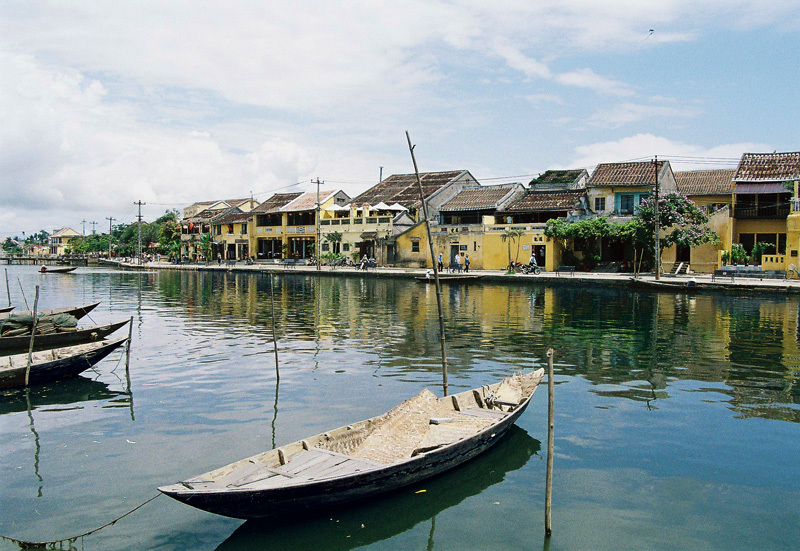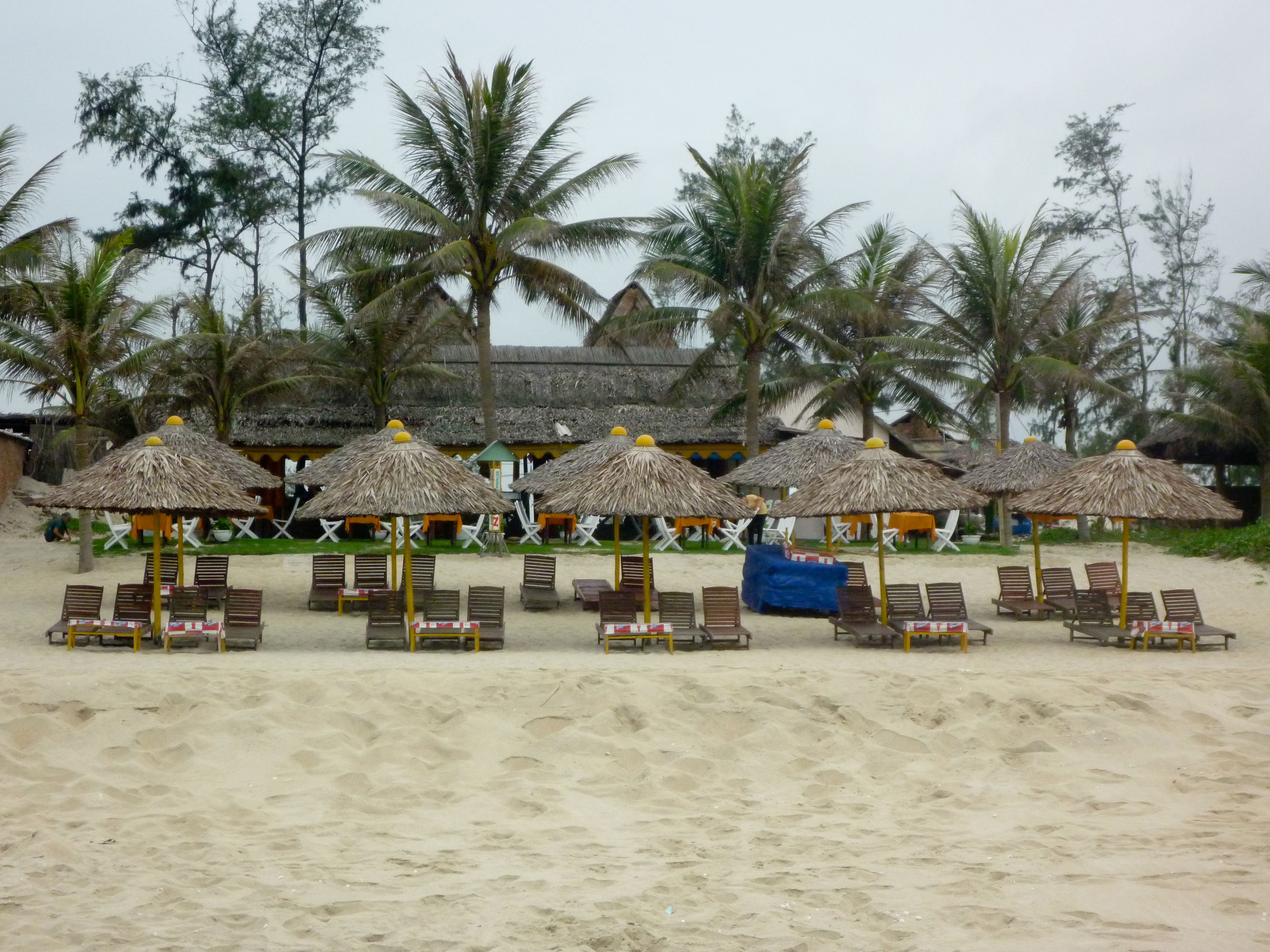Hội An is a city of Vietnam, on the coast of the South China Sea in the South Central Coast of Vietnam. It is located in Quang Nam province and is home to approximately 120,000 inhabitants. It is recognized as a World Heritage Site by UNESCO.
The city possessed the largest harbour in Southeast Asia in the 1st century and was known as Lâm Ấp Phố (Champa City). Between the seventh and 10th centuries, the Cham (people of Champa) controlled the strategic spice trade and with this came tremendous wealth. The former harbour town of the Cham at the estuary of the Thu Bồn River was an important Vietnamese trading centre in the 16th and 17th centuries, where Chinese from various provinces as well as Japanese, Dutch and Indians settled. During this period of the China trade, the town was called Hai Pho (Seaside Town) in Vietnamese. Originally, Hai Pho was a divided town with the Japanese settlement across the "Japanese Bridge" (16th-17th century). The bridge (Chùa cầu) is a unique covered structure built by the Japanese, the only known covered bridge with a Buddhist pagoda attached to one side.
A highlight of any trip to Vietnam, Hoi An is a town oozing charm and history, having largely escaped the destruction of successive wars. Once a sleepy riverside village, it’s now quite definitely a tourist town – with hotels, restaurants, bars, tailors and souvenir shops dominating the old centre. Despite this air of irreality, Hoi An’s charisma pervades.
Advertisement
The local People’s Committee periodically clamps down on touts, and while this doesn’t mean a completely hassle-free visit, a stroll down the street is usually more relaxed here than in Hué or Nha Trang. Hoi An is pedestrian-friendly: the Old Town is closed to cars and the distances from the hotels to the centre are walkable. It’s a great place to hire a bike.
Known as Faifo to Western traders, from the 17th to 19th centuries it was one of Southeast Asia’s major international ports. Vietnamese ships and sailors based here sailed all around Vietnam, Thailand and Indonesia.
Perhaps more than any other place in Vietnam, Hoi An retains a sense of history that envelops you as you explore it. This is especially true on ‘Hoi An Legendary Night’. Every month on the full moon, motorbikes are banned from the Old Town, which is transformed into a magical land of silk lanterns, traditional food, song and dance, and games in the streets.
Every year during the rainy season, particularly in October and November, Hoi An has problems with flooding, especially in areas close to the waterfront. The greatest flood ever recorded in Hoi An took place in 1964, when the water reached all the way up to the roof beams of the houses. In late 2006 the town bore the brunt of the worst typhoon in 50 years.
There’s plenty to do in Hoi An. Emphatically the most enchanting place along the coast, this is one spot worth lingering in.




![]()









